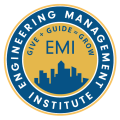In this episode, I talk with Clarke Chauvin, PE, PTOE, PMP, Senior Project Manager and Licensed Professional Engineer at Neal Schaffer, about Intelligent Transportation Systems. We explore how emerging technologies like AI, adaptive signals, and near-miss detection are transforming roadway design and traffic safety. With emphasis on seamless communication, real-time data, and project integration, the conversation provides clear strategies AEC professionals can use today to improve mobility, engage funding, and amplify client impact.
Here Are Some of the Questions I Ask Clarke Chauvin, PE, PTOE, PMP
- How did you get started in Intelligent Transportation Systems?
- What is Intelligent Transportation Systems and how does it function in transportation projects?
- How have traditional ITS tools like CCTV and dynamic message signs influenced traffic operations so far?
- How are AI and new technologies like connected vehicles, wrong-way detection, and near-miss analysis changing Intelligent Transportation Systems?
- What technical components does Intelligent Transportation Systems rely on to work effectively, and what communication challenges do agencies face?
- How can non-ITS professionals on AEC project teams effectively communicate with ITS experts?
- How do Intelligent Transportation Systems projects improve safety, mobility, and equity, and how are these benefits measured?
- What funding sources are available for Intelligent Transportation Systems and how can project managers access them?
- Are ITS projects typically standalone projects or parts of larger infrastructure efforts?
- What are the most exciting future opportunities in Intelligent Transportation Systems today?
- What do project managers in Intelligent Transportation Systems do to stay current with industry innovations?
- What is the biggest project management pitfall in ITS design and how can it be avoided?
Here Are Some Key Points Discussed in This Episode About How Intelligent Transportation Systems Improve Road Safety and Efficiency:
- Intelligent Transportation Systems is a niche field that opens up once people network into projects involving roadway technology and safety innovation. Passion for making transportation systems more efficient and safer often drives professionals to grow quickly within the ITS arena.
- Intelligent Transportation Systems includes communications, detection, surveillance, and messaging infrastructure that safely and efficiently move vehicles across transportation networks. It combines hardware and software tools to deliver real-time information and streamlined traffic control.
- Traditional ITS tools help reduce accidents and response time by enabling live monitoring and quicker coordination with first responders. These components not only save lives but also significantly improve roadway efficiency.
- Artificial intelligence and connected technologies enable customized traffic solutions for specific local problems instead of deploying broad, ineffective tools. This targeted application leads to greater safety and maximizes return on investment for transportation agencies.
- ITS systems rely on 24/7, high-reliability communication between devices to function smoothly and send alerts in real time. Bandwidth limitations are addressed with advanced tools like edge computing and AI to stretch capabilities without overloading the infrastructure.
- AEC professionals unfamiliar with ITS can build effective collaboration by listening, asking questions, and relying on the expertise within their teams. Trust and open communication are essential to helping clients understand and implement ITS solutions with confidence.
- Adaptive signals and new tech applications can reduce travel time over 30% without adding new lanes, offering massive return on investment. ITS evaluations use before-and-after metrics like travel time and incident rates to clearly demonstrate project value.
- Funding is available through federal, state, and local programs focused on safety, emissions reduction, and tech advancement. Many agencies can access grants if they align ITS applications with broader goals such as sustainability and traffic safety.
- Some ITS projects are fully standalone efforts, while others are integrated into large-scale infrastructure builds. AEC firms benefit by understanding how to flexibly apply ITS based on client needs and project scope.
- The most exciting future in ITS involves AI enabling drastic improvements in detection, response time, and operational efficiency. Real-time data from sources like drones and mobile apps opens new doors for proactive safety and traffic management.
- Staying ahead in ITS requires constant learning through reading, attending conferences, and networking with vendors and fellow professionals. Communication drives innovation by connecting ideas from emerging technologies to client needs before solutions go to market.
- The biggest PM pitfall in ITS is neglecting real-world constructability due to staying entirely in the design phase. Getting field experience allows project managers to create more realistic, successful build plans that work from concept to construction.
More Details in This Episode…
About Clarke Chauvin, PE, PTOE, PMP

Sources/References:
Neal Schaffer
FHWA
Gulf Region Intelligent Transportation Society
Connect with Clarke Chauvin, PE, PTOE, PMP, on LinkedIn
AEC PM Certification
AEC PM Connect
Project Management Accelerator™
Engineering Leadership Accelerator™
Please leave your comments, feedback, or questions in the section below.




























